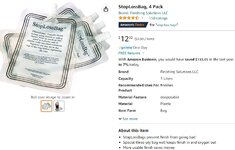Hi all,
Quick question--Does Tung Oil (100% pure, not the stuff labeled tung oil but consisting of a bunch of other things) go rancid and, if so, what's the approximate shelf life? I'm in Maryland, to the extent climate matters. Also, would something like bloxygen help keep it fresh?
It's the time of year to refinish my patio furniture. I've been wanting to move to a pure tung oil finish for my bowls, cutting boards, and spoons so I'm inclined to just buy a big gallon jug of tung oil for the furniture and the cuttting boards. But I probably won't use it all and don't want to drop that much coin if there's a decent chance it will go bad.
Thanks,
Eric
Quick question--Does Tung Oil (100% pure, not the stuff labeled tung oil but consisting of a bunch of other things) go rancid and, if so, what's the approximate shelf life? I'm in Maryland, to the extent climate matters. Also, would something like bloxygen help keep it fresh?
It's the time of year to refinish my patio furniture. I've been wanting to move to a pure tung oil finish for my bowls, cutting boards, and spoons so I'm inclined to just buy a big gallon jug of tung oil for the furniture and the cuttting boards. But I probably won't use it all and don't want to drop that much coin if there's a decent chance it will go bad.
Thanks,
Eric

